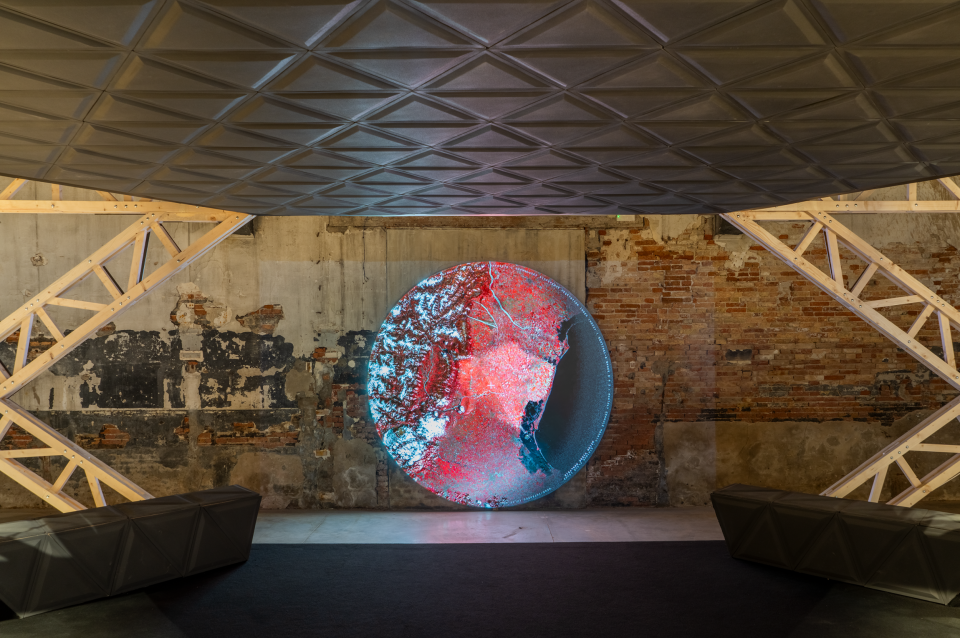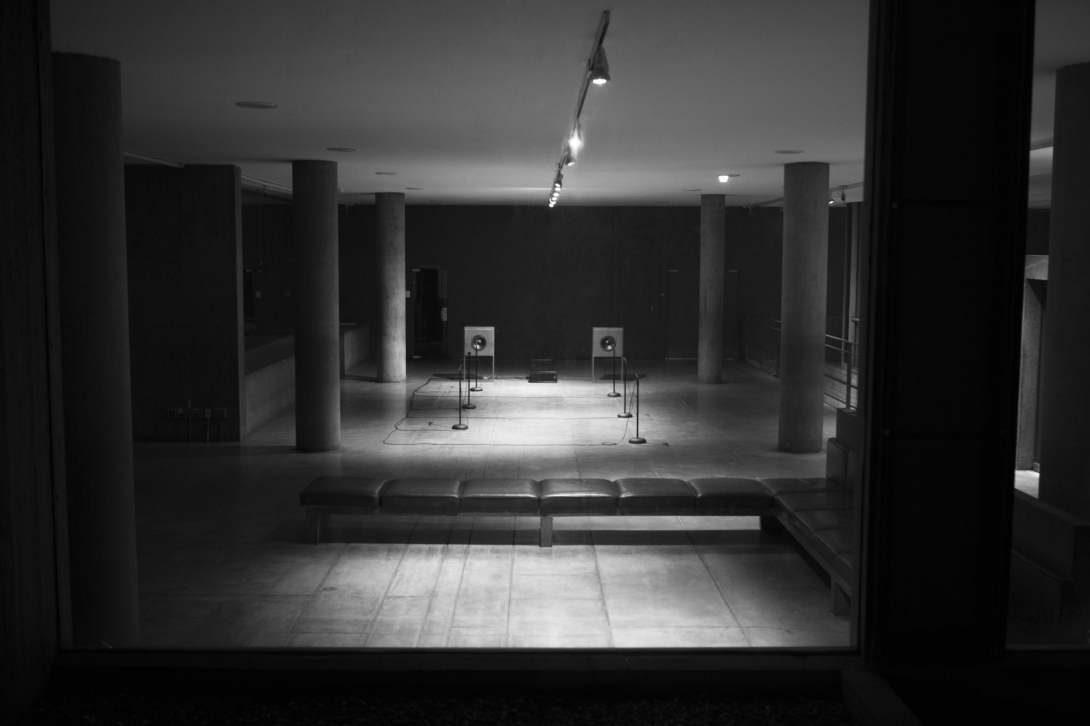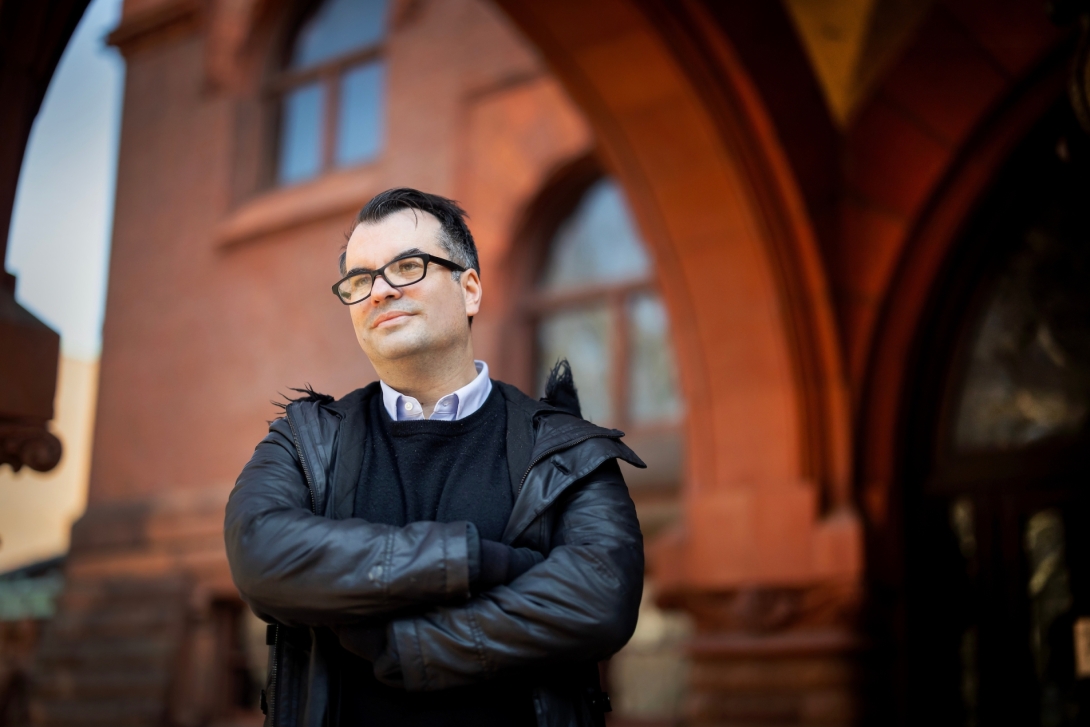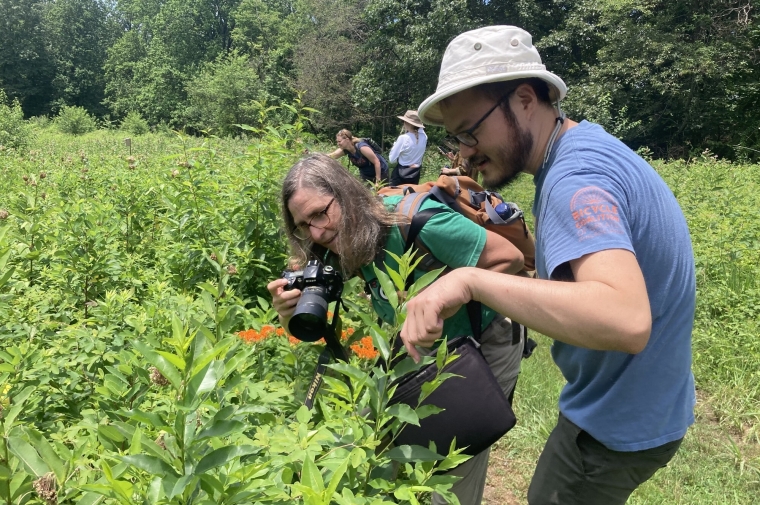May 1, 2025
Pietrusko Brings His Immersive, Intermedia Experiments to Venice
By Jesse Dorris

Robert Gerard Pietrusko collaborated on the installation ”A Satellite Symphony,” which explores how satellites frame how we understand the earth itself; the viewing structure was constructed from trees from the Veneto region downed by storms. (Photo Gaia Cambiaggi / Studio Campo)
Close
Robert Gerard Pietrusko collaborated on the installation ”A Satellite Symphony,” which explores how satellites frame how we understand the earth itself; the viewing structure was constructed from trees from the Veneto region downed by storms. (Photo Gaia Cambiaggi / Studio Campo)
Robert Gerard Pietrusko and Stewart Smith with Bernd Lintermann, "trans_actions," 2011 (Photo: ZKM Center for Art and Media)

 View Slideshow
View Slideshow



